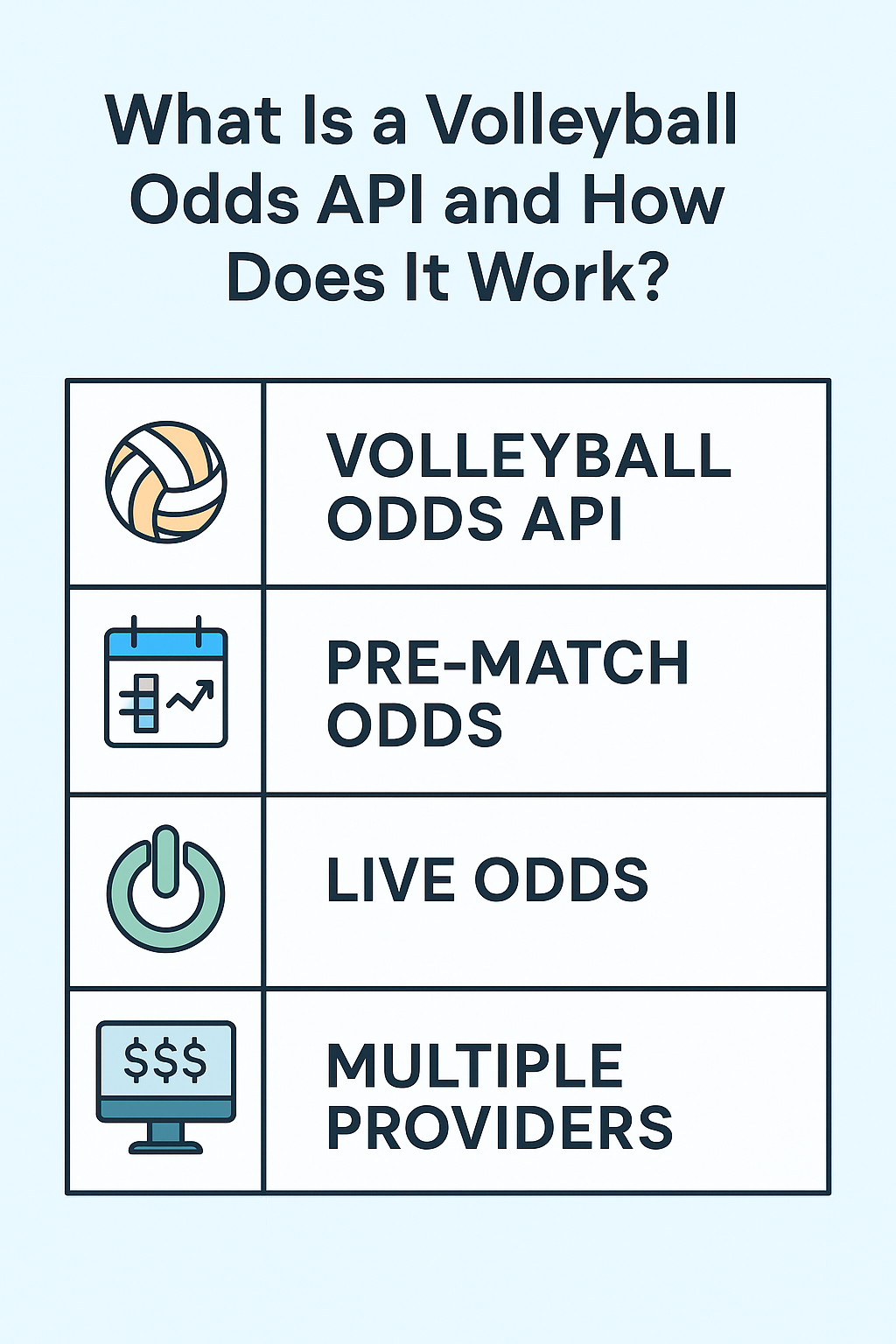What Is a Volleyball Odds API and How Does It Work?

In the ever-evolving world of online sports data and betting technology, the demand for real-time and accurate odds information is higher than ever. Whether you're running a sports betting platform, a score tracking website, or a fantasy app, having access to live and historical odds is essential. That’s where a Volleyball Odds API becomes a game-changing tool.
A Volleyball Odds API provides developers and businesses with automated access to betting odds for volleyball matches. These APIs are built to deliver real-time data such as pre-match odds, live in-play odds, and historical trends directly from bookmakers or data aggregators. With just a few lines of code, developers can integrate this information into their apps or websites, saving time and improving the user experience.
How Does a Volleyball Odds API Work?
A Volleyball Odds API works like a bridge between sports betting data sources and your digital platform. Here's how it typically functions:
-
Connect to the API Provider:
You start by signing up with an API provider and receiving an API key. This key authenticates your app to make requests. -
Make API Requests:
Your application sends requests to the API using endpoints such as/odds/prematch,/odds/live, or/matches/today. These endpoints return structured data, usually in JSON format. -
Receive and Display Data:
The API sends back information such as:-
Team names and match details
-
Betting odds for different markets (e.g., match winner, total sets, handicaps)
-
Time of the match
-
Bookmakers offering the odds
-
-
Keep It Updated:
Some APIs offer real-time updates every few seconds, especially for in-play markets. You can build systems to refresh data and reflect odds changes instantly. -
Use for Analysis or Display:
Once you have the data, you can display it on a front-end dashboard, run predictive models, or create odds comparison tools.
Key Features of a Volleyball Odds API
Here are some of the most common features provided by top Volleyball Odds APIs:
- Live Odds: In-play markets including next set winner, point spreads, and total points
- Pre-Match Odds: Odds for match outcomes, over/under lines, and more before the game starts
- Multiple Bookmaker Support: Compare odds from platforms like Sportbex, Pinnacle, or William Hill
- Historical Data: Access to past matches and odds trends for betting analysis
- Match Information: Match date, time, teams, tournament names, and venue details
These features help platforms offer accurate, engaging, and up-to-date information to users looking for informed betting decisions.
Use Cases for a Volleyball Odds API
-
Sports Betting Platforms:
Display real-time volleyball odds to users in different formats. -
Odds Comparison Websites:
Show users where they can find the best odds for a particular match. -
Fantasy Sports Apps:
Use odds data to highlight likely match outcomes or suggest fantasy picks. -
Analytics Tools:
Combine odds data with player statistics to create powerful prediction models. -
Content Platforms:
Enrich blog posts or news updates with current betting trends and odds.
Conclusion
While the Volleyball Odds API focuses specifically on betting markets, it's just one part of the larger volleyball data ecosystem. If you're also interested in match schedules, team stats, or player performance, a broader Volleyball API may be more suitable for your needs.
In fact, many sports developers use both types of APIs together: one to track the performance side of the game, and the other to power odds-based features. With the growing demand for real-time sports content and data-driven decision-making, having access to these tools can set your platform apart in terms of speed, accuracy, and user engagement.
Whether you're building a simple odds tracker or a full-fledged betting platform, integrating the right API solution is key to staying competitive and delivering value to your users.
- Art
- Causes
- Crafts
- Dance
- Drinks
- Film
- Fitness
- Food
- الألعاب
- Gardening
- Health
- الرئيسية
- Literature
- Music
- Networking
- أخرى
- Party
- Religion
- Shopping
- Sports
- Theater
- Wellness



